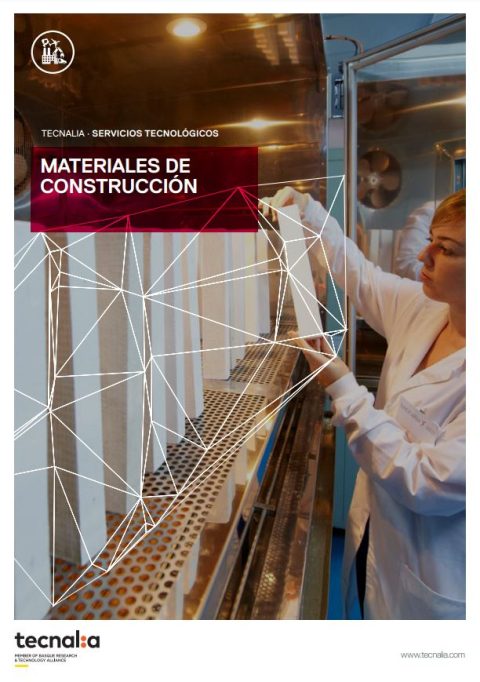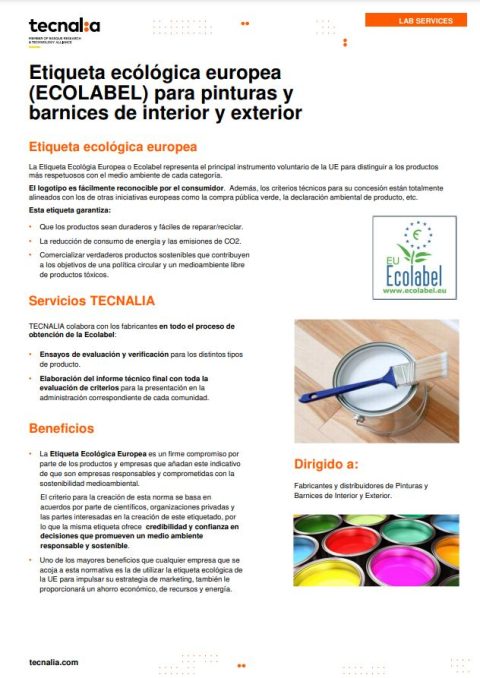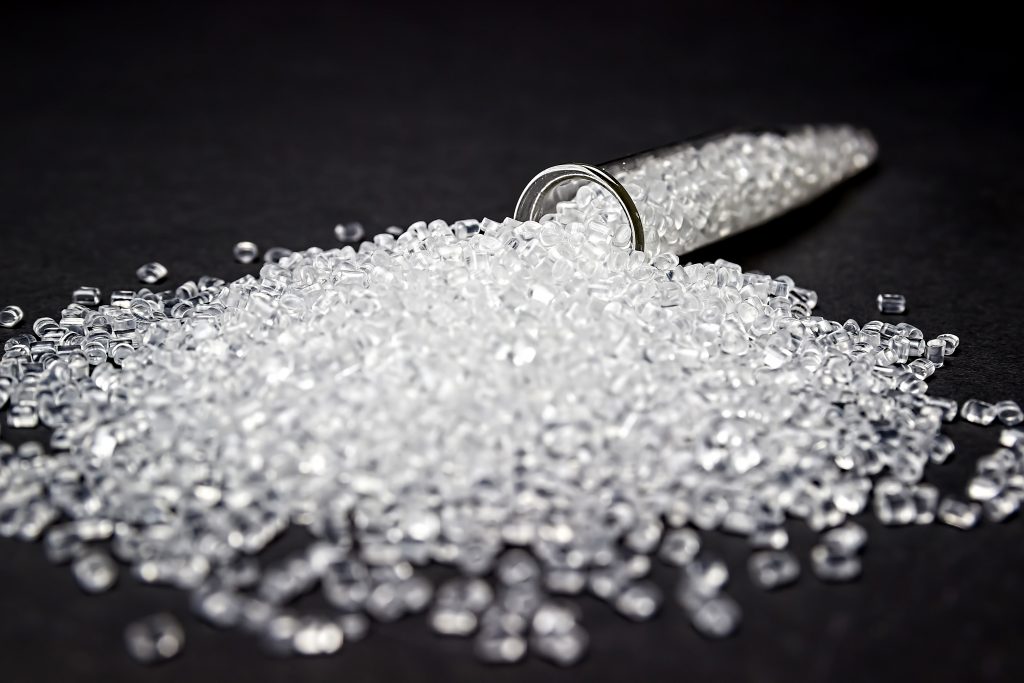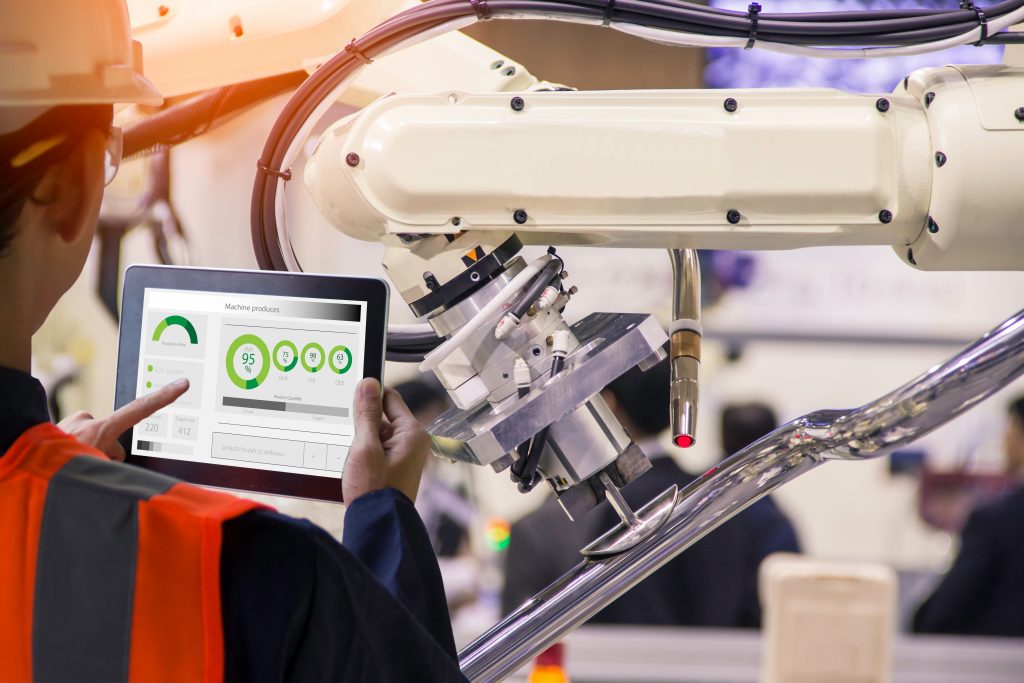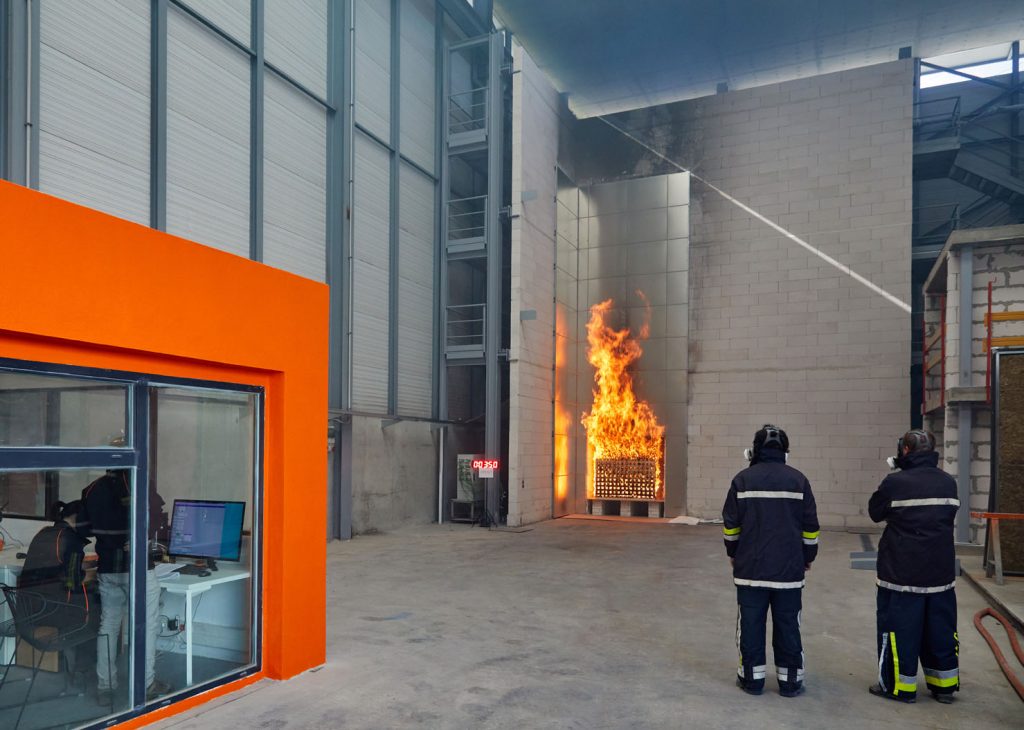TECNALIA helps manufacturers and distributors to get the European Ecolabel for their products, using assessments and other processes.
The main product categories that are assessed are:
- Paints and varnishes
- Personal care products
- Cleaning products
- Floors and solid coverings
- Furniture
What is the European “Flower” Ecolabel?
The European Ecolabel is a Type I label with the following general characteristics:
- Voluntary labelling.
- It aims to identify and promote ecological products.
- Established by product category.
- Based on numerous criteria throughout the entire product life-cycle.
- Criteria established by an independent body that does not participate in the market.
- Use controlled by a certification and audit process (specific requirements according to ISO 10424).
What criteria does the label follow and what is the benefit for companies?
The criteria for the creation of European decisions that regulate the label are based on agreements by scientists, private organisations and parties interested in the creation of this label. This label offers credibility and trust as it is backed by European decisions which foster respect for the environment and sustainability.
The ECOLABEL is a firm commitment by companies who add this label to their products and shows that they are responsible companies, committed to environmental sustainability.
Companies who adhere to this standard are able to use the ECOLABEL logo and focus their marketing strategy and positioning on their commitment to sustainability.
European Ecolabel for paints and varnishes
TECNALIA helps manufacturers of coverings to get the European Ecolabel (ECOLABEL) for Paints and Varnishes by carrying out the necessary tests up to the criteria assessment and offers support in the preparation of the dossier that is submitted to the competent bodies.
Criteria assessment:
- Criterion 1: White pigment and wet scrub resistance
- Criterion 2: Titanium dioxide
- Criterion 3: Efficiency in use
- Criterion 4: Volatile and semi-volatile organic compounds (VOCs, SVOCs)
- Criterion 5: Restriction of hazardous substances and mixtures
- Criterion 6: Consumer information
- Criterion 7: Information that appears on the EU ecological label
European Ecolabel for personal care products
The European Ecolabel for cleaning products is awarded to products that have a lower environmental impact throughout their life-cycle. The main assessment criteria:
1.Ingredients:
Biodegradability: Ingredients must be readily biodegradable, especially in aquatic environments.
Reduced toxicity: They must not include substances that are hazardous to human health or the environment, such as toxic, carcinogenic or endocrine-disrupting products.
Limited hazardous substances: The use of phosphates, preservatives and other harmful chemicals is limited.
- Product effectiveness:
The product must be effective in the cleaning tasks for which it is designed without requiring excessive use. - Environmental impact:
Reduction of pollutant emissions to air and water during the product life-cycle.
The use of ingredients with a low environmental impact and derived from sustainable sources is encouraged. - Packaging:
Reduction, reuse and recycling:Packaging should be minimised and recyclable. Packaging made from recycled materials is favoured.
Product concentration: Incentive to sell concentrated products that require less packaging and generate less waste. - Resource consumption:
Reduction of energy and water use in production and product use. - Transparency:
Clear and accurate information on ingredients and their environmental impact so consumers can make informed choices.
7.Safety:
The product must be safe for users and not cause allergies or irritation, in accordance with European regulations.
European Ecolabel for flooring and coating products
It is awarded to those that have a lower environmental impact during their life-cycle. The main assessment criteria:
1.Composition and materials:
Use of sustainable or recycled materials, avoiding hazardous or non-renewable raw materials.
Dangerous substances: The use of toxic substances, such as heavy metals or volatile organic compounds (VOCs), which may affect health or the environment, is limited.
- Pollutant emissions:
Reduced emissions of volatile organic compounds (VOCs), which contribute to indoor air pollution.
Minimisation of the release of harmful substances during manufacturing and product life cycle. - Resource efficiency:
Energy efficiency in the manufacturing process, reducing energy and water consumption.
Promotion of clean technology in production. - Durability and performance:
Products must be tough and durable, ensuring a long life-cycle to avoid frequent replacement.
Wear resistance, so less maintenance is required. - Packaging and waste:
Use of recyclable packaging or packaging with recycled materials.
Minimisation of waste generated during manufacture and final disposal. - Health impact:
Safety for users, with products that do not emit toxic gases or pose health risks when installed or used. - End-of-life management:
Products should be recyclable or reusable at the end of their useful life, promoting a circular economy.
European Ecolabel for furniture
It is awarded to products that minimise their environmental impact throughout their life-cycle. The main assessment criteria:
1.Materials and resources:
Wood, cork, bamboo: They must come from sustainable sources and be certified (such as FSC or PEFC).
Recycled materials: The use of recycled or recyclable materials in the production of furniture is encouraged.
Dangerous substances: Restriction of harmful chemicals, such as heavy metals, formaldehyde and toxic flame retardants.
- Pollutant emissions:
Volatile organic compounds (VOCs): Reduction of VOC emissions affecting indoor air quality. - Durability and quality:
Furniture should be sturdy and durable, with a long useful life to avoid frequent replacement.
Meet high standards of wear resistance and stability. - Production and design:
Efficiency in the use of energy and water during manufacturing.
Minimisation of waste in the production process.
Designs that allow components to be easily dismantled and recycled at the end of their useful life is encouraged. - Packaging:
Reduction and recyclability:Furniture should have a minimum amount of packaging, preferably made of recycled and recyclable materials.
Health impact:
The materials used must be safe for users, without releasing harmful substances or posing health risks.
End of life:
reuse and recycling: The design should facilitate the reuse or recycling of furniture parts at the end of its useful life, promoting the circular economy.
Why choose TECNALIA to get the European Ecolabel?
TECNALIA’s work stands out because we collaborate directly with manufacturers throughout the entire process of being awarded the Ecolabel, from testing in our laboratories and assessment of the criteria to the preparation of the dossier.
TECNALIA is also the largest applied research and technological development centre in Spain.
Who we can help
Paint and varnish manufacturers
Personal care products
Cleaning product manufacturers
Floor and solid covering manufacturers
Furniture manufacturers
Accreditations and Certifications

ENAC Accreditation No. 4/LE024 for the Construction Industry

ENAC Accreditation No. 4/LE063 for the Materials Sector
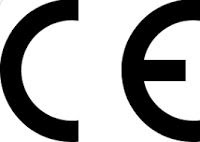
TECNALIA is Notified Body Number 1292 for the Construction Products Regulation

Technical Assessment Body (TAB) for issuing European Technical Assessments (ETAs) for Construction Products.


